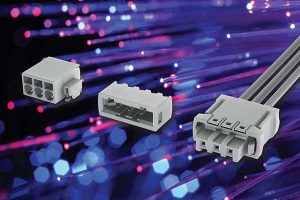
Andy Pye visited Harting Technology Group in Germany to find out about the manufacture and construction of electronic connectors, including those used for LED lighting.
LED lighting is here and growing. And as the technology matures and becomes more widely deployed, so too do the design and manufacturing techniques employed in creating new, innovative LED lighting products. Consequently, the market for components associated with LED lighting is already becoming highly competitive.
Owing to three main factors, the market share of LED lighting technologies has grown rapidly. According to global management consulting firm McKinsey & Company1, in 2010, LEDs represented just 14 percent. By 2016, this has grown to 58 percent, and is predicted to rise to 78 percent by 2020. This massive growth has been driven by three main factors.
Price reduction
The first of these is the reduction in price of LED technologies. Not only this, but the installation cost has also fallen relative to the cost of energy used. Given that LEDs use as little as 20% of the energy consumed by other technologies and can be virtually maintenance-free for up to 50,000 hours of operation, this has significantly shifted comparisons of total cost of ownership greatly in favour of LEDs.
Regulatory shifts
The second factor is a shift in the regulatory environment. Many countries have introduced laws or other statutory mechanisms aimed at reducing CO2 emissions. The greater energy efficiency of LED lighting versus other technologies is an easy option for those specifying lighting for streets, indoor areas or road signs. In addition, other regulations have been put in place to reduce the use of harmful chemicals in lighting units, to make them easier to recycle, or to extend the life expectancy of lighting units. A good example is the European regulations in 2015 that ban the future specification of Mercury Vapour street lights.
New applications
The final major factor in the growth of LED lighting is the expanding range of applications to which designers apply the technology. Increasingly, LEDs are being used to light road signs and motorway direction boards. But LEDs are also appearing as indoor lighting, presenting a new range of design challenges.
Many indoor applications, both domestic and industrial, require a level of ingress protection. This may be to protect the lighting unit from ink mist, water vapour, dust or other substances. Due to their low levels of waste heat and small size, LEDs lend themselves well to these applications.
While outdoor lighting applications are often about efficiency and creating as much light as possible from as little energy as possible, indoor applications often have an additional ‘quality’ element in their specification. This is particularly important in signage and advertising. Because of their small size, LEDs are particularly suitable for innovative distributed designs of back-lighting.
By positioning LEDs around the inside edges of the frame, designers can achieve a very even spread of light across the sign producing a brilliant image without ‘hot spots’.
Printed circuit board innovations
To avoid shadows and dull spots, components such as printed circuit board (PCB) terminal block connectors and discrete wire cables must be ‘light neutral’, preferably white in colour, and with very small profiles above the PCB to eliminate shadows. PCBs are usually white coated to maximise reflection, but it is remarkably easy for components such as connectors to cause a dull spot by discolouring during reflow soldering (which heats the components as well as the PCB and contact points).
In the past, to avoid the problem of shadowing and discoloured dull-spots, most LED lighting PCBs were hand soldered for wire-to-board connectivity. However, this creates other disadvantages, such as the high-cost of manual work and soldering failures.

The result is the development of surface mount technology (SMT) PCB terminal block connectors such as the Harting Har-Flexicon, designed specifically to deliver power to LED lighting units.
These connectors are available in a white, high temperature liquid crystal polymer (LCP) that must be compliant with the reflow processing requirements of the thermally conductive metal PCB substrates. They must also satisfy these requirements, because of the LCP material’s high resistance to UV damage, and the high lighting quality conditions of minimised shadowing, by remaining colour-stable after SMT processing, and during the light’s operational life.
Applying Har-Flexicon with surface mount reflow soldering processes greatly simplifies LED Module PCB assembly. Connecting the conductors in lighting fixtures was formerly often done using hand soldering. This is often unreliable and prone to error when using printed circuit boards with a metal core, due to the high degree of heat dissipation. The design of the Har-Flexicon connector SMT PCB hold-downs ensures rugged solder-pad retention and supports reliable handling.
LED lighting lifetime is further extended through pluggable discrete wire cable connectors that feature highly reliable push-in spring-cage discrete wire termination and have a strong but flexible locking-latch design which is damage resistant, ensuring dependable mating and field maintenance.
The views, opinions and technical analyses presented here are those of the author or advertiser, and are not necessarily those of ULProspector.com or UL Solutions. The appearance of this content in the UL Prospector Knowledge Center does not constitute an endorsement by UL Solutions or its affiliates.
All content is subject to copyright and may not be reproduced without prior authorization from UL Solutions or the content author.
The content has been made available for informational and educational purposes only. While the editors of this site may verify the accuracy of its content from time to time, we assume no responsibility for errors made by the author, editorial staff or any other contributor.
UL Solutions does not make any representations or warranties with respect to the accuracy, applicability, fitness or completeness of the content. UL Solutions does not warrant the performance, effectiveness or applicability of sites listed or linked to in any content.



Leave a Reply or Comment